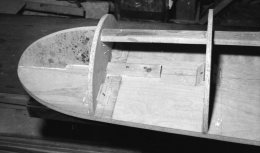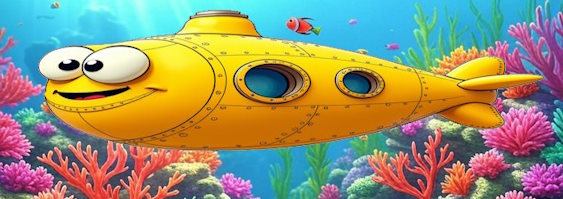
(just a thought provoking, "quick peek")
The bottom half of the plug was made with 1/2" particle board. Anything can be used, even stiff cardboard. It just has to be strong enough to hold its shape while a mould is taken from it. Below - one inch wide strips cut from 1/8" wallboard panelling are stapled to the ribs to keep its shape, then aluminum screen is stapled on.

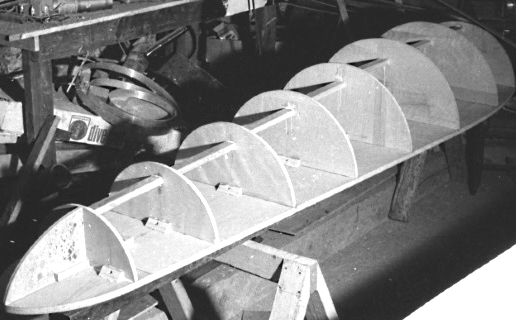
The rear end will be covered like the front end.
A coat of fibreglass cloth soaked in resin, is applied.
Covered in a coat of automotive body filler then sanded as smooth as possible.
It was difficult to sand a perfect arc, so I glued a strip of sandpaper to a strip of arborite and added a wooden dowel handle attached by wire to both ends. It was awkward and demanding work but made easier with brother Randy helping.
First layer of gel-coat rolled on then the plug is attached to a flat board that extends 2" out from the bottom all the way around and several more layers of gel-coat applied then sanded smooth with ever decreasing grits of waterproof sandpaper then waxed to a shine. The mould is taken from that.
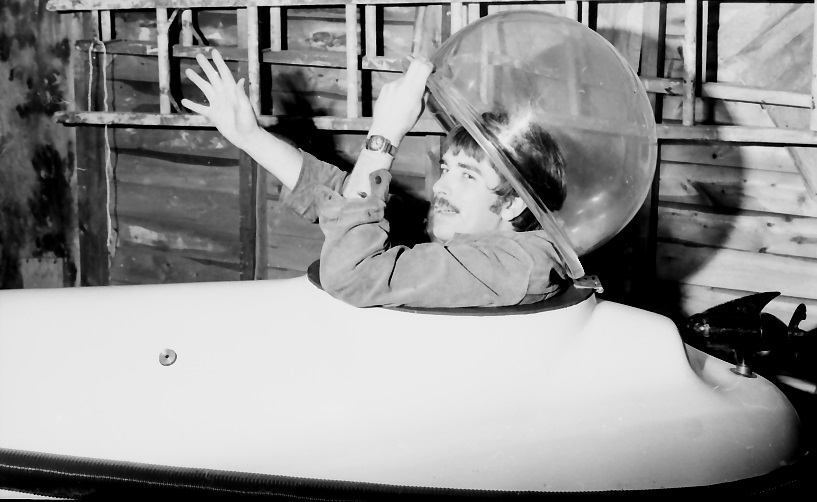
The conning tower is fabricated to the plug using the same techniques as above. The first plastic bubble made at a plastic shop was too shallow, cramping the operator and restricting the view. They said it was "impossible" to make it deeper as it would bulge then couldn't be removed from the mould, so I bought a 1" thick piece of plexiglass then designed and built my own "split-ring" moulds from 1/2" steel plate. The plexiglass was heated in my kitchen oven, quickly bolted to the mould and with my compressor hose attached, blown into the shape below. (a friend posing)


The dive planes were 1/8 inch stainless steel plate, bolted to a single 3/4 inch stainless shaft which went through the bottom half of the submarine.
Inside were two foot pedals bolted to the shaft that tilted the planes up and down with the forward and backward movement of the operator's feet.
The shaft went through a bronze bearing on each side that was pressed into and sealed to the hull with epoxy resin. Each bearing had
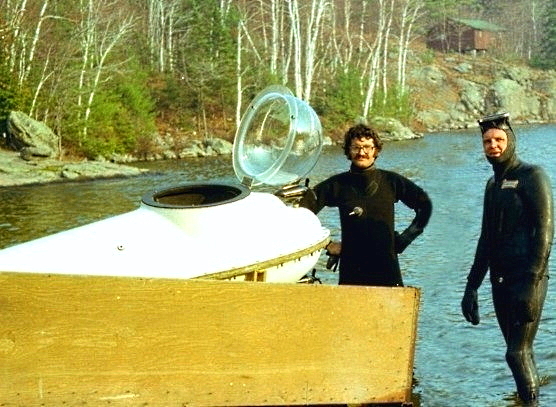
Below - first launch (1979) at Kabakwa lake in Haliburton, Ontario. Even though it would only do a walking speed,
"It was the fastest boat under the lake." Ron Huggett
Ron Huggett (right) was Dave & Randy's Dad, who bought the cottage in the background (on 3 acres) in 1965 for $2,100.
<- resting on stands - the dive planes have been removed from the shafts
<- rubber peripheral bumper removed
<- 72 stainless 1/2 inch bolts hold the two halves together
<- top and bottom 12V electric motors shown
On the surface the submarine could only be powered by the bottom motor as the top one broke the surface. When submerged, the top motor could be turned on for more speed, but at half the battery life.

The following article appeared in the MTPA News & Views magazine.
(Toronto, Ontario)
A SUBMARINE
By JAMES BREDIN
Our members who visited the boat show last January and dreamt our impossible dreams were mildly surprised at the display of a midget submarine. We were even more surprised when we recognized the name of its designer and builder, David Huggett. Dave built the submarine moulds in his basement and assembled the parts in his living room. One has to know Dave to realize that, not only would he chance it, but he would probably succeed.
This is not a wet submarine which requires the driver to wear Scuba gear. This is the real thing. The driver can wear his best Sunday-go-to-meeting clothes and simply drive or dive away.
In Dave's submarine, which he calls a Sports Sub, one is not subject to water pressure which limits the capabilities of Scuba divers. The one inch thick "handgun bullet-proof" specially laminated fiberglass hull was designed to withstand pressure down to one hundred feet.
This prototype is driven by two, 12 amp, 9 pound thrust, electric trolling motors. It is submerged by flooding two ballast tanks, front and back. These can be individually controlled for trim. A 200 pound lead keel gives it stability and weight to dive. The driver (or pilot) breathes normally.
Oxygen is added to the cabin via a flow meter from a D tank at the rate that his body absorbs it.
The exhaled carbon dioxide is absorbed by an acrylic scrubber, also designed by Dave. The air is also drawn over activated charcoal and soda lime and smells better than downtown Toronto.
The driver (or pilot) views the underwater world through a one inch thick plastic dome. During construction, Dave inquired from the manufacturers of large street lamp fixtures if they made these domes. They didn't. He did, and built a mould and with the help of air pressure and his kitchen oven, manufactured the dome himself.
Ascent (getting to the surface after a dive) is controlled by opening the valves on an internal Scuba tank and blowing out the water from both ballast tanks. This makes the submarine lighter and it rises to the surface. Ascent could also be achieved by simply driving up.
In case of an emergency, surfacing could be achieved by releasing the two hundred pound lead keel and the submarine would rise to the surface. Or, if stuck, the driver could simply abandon the submarine by flooding the cabin, connecting the scuba tank and mask, opening the hatch dome and swimming to the surface.
Dave has received many phone calls and letters from people interested in his designs. Those of us who are into boating, even if we only dream about it, look forward to his next innovations.
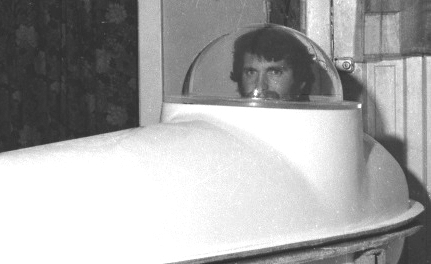
Randy, bent over and cramped, with the original bubble made by the plastic shop.
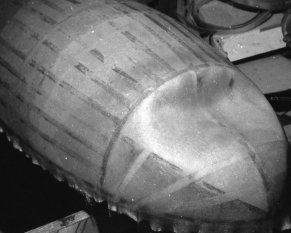
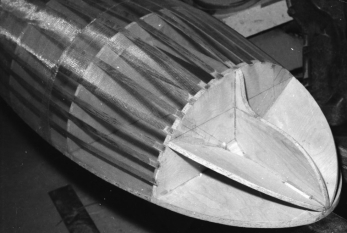
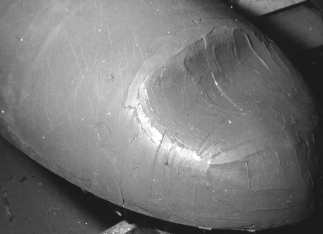
The shell was built using the same principles as making any fiberglass (or carbon fiber) object. First you fabricate a "plug" which is a mock-up of the shape of the finished product. Since the submarine was to be symmetrical, I built the bottom half of the plug first.
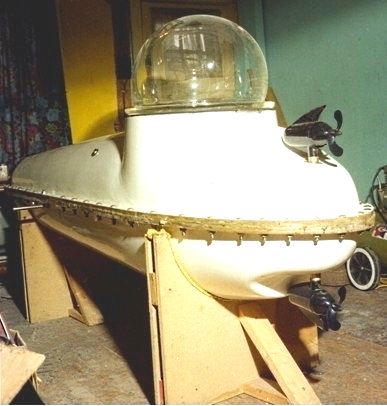
“I don’t like patents. I discovered that they are really like buying a lottery ticket to a lawsuit." Elon Musk
The hull was designed to take a tremendous pressure but a safe diving depth (in any homebuilt sub) should be no greater than just a few feet below the surface, until it has been pressure tested to a greater depth, to which it should never be taken.
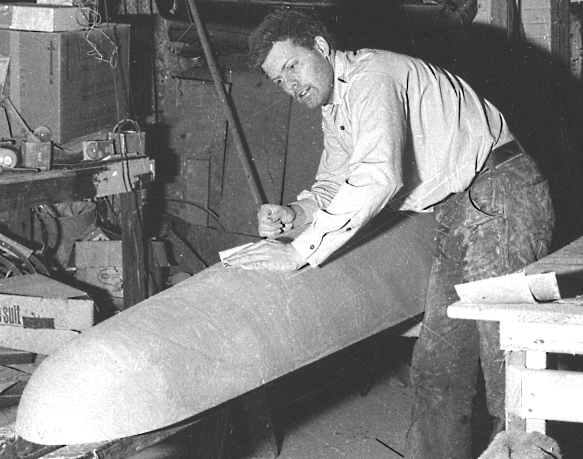

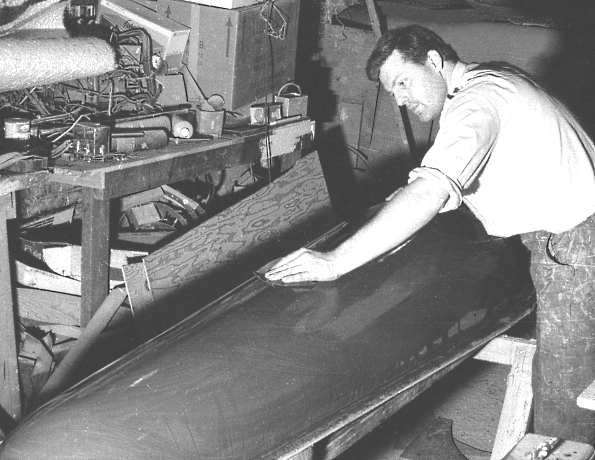
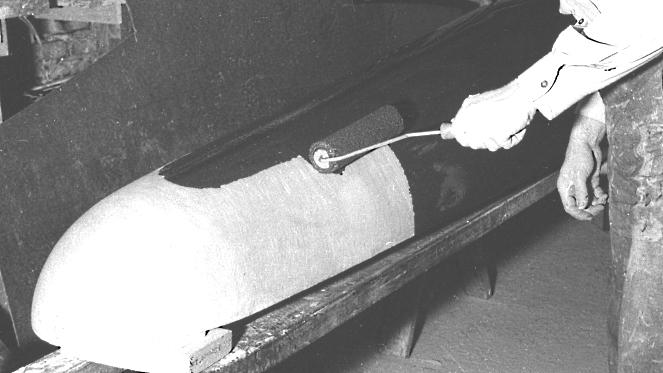
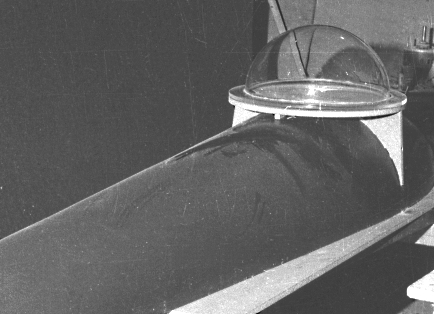
"All boats can submerge, but a submarine can do it more than once." D. J. Huggett

